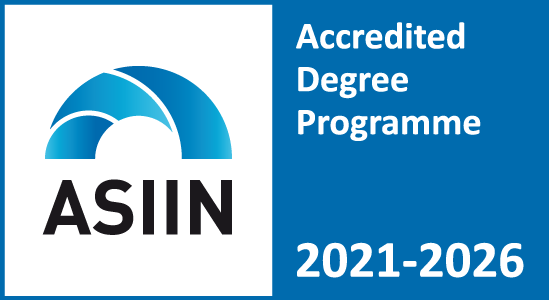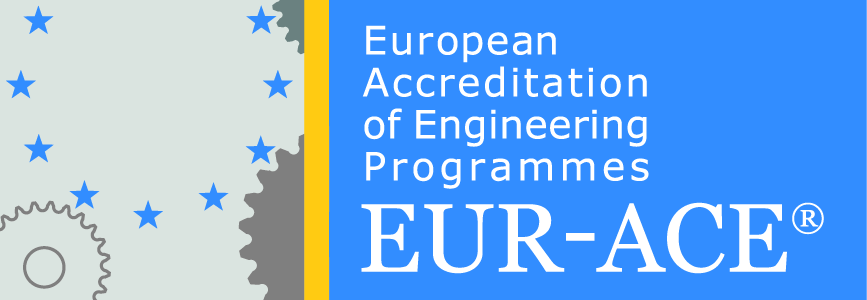| 1. | Course Title | Ambient Intelligence and Smart Devices | |||||||||||||
| 2. | Code | 4ФЕИТ07001A | |||||||||||||
| 3. | Study program | Dedicated Embedded Computer Systems and Internet of Things | |||||||||||||
| 4. | Organizer of the study program (unit, institute, department) | Faculty of Electrical Engineering and Information Technologies
Ss. Cyril and Methodius University in Skopje |
|||||||||||||
| 5. | Degree (first, second, third cycle) | Second cycle | |||||||||||||
| 6. | Academic year/semester | Year | I | Semester | 1 | ||||||||||
| 7. | Workload measured by number of ECTS credits | 6 | |||||||||||||
| 8. | Lecturer (in case of several lecturers to note the responsible one) | Dr. Daniel Denkovski, Dr. Hristijan Gjoreski | |||||||||||||
| 9. | Language of teaching | Macedonian and English | |||||||||||||
| 10. | Course prerequisites | None | |||||||||||||
| 11. | Course goals (acquired competencies) and study results:
Introduction to the concept of mobile sensor systems and their use in everyday life, wearable sensors, smart devices, ambient intelligence. This course aims to provide students with knowledge of practical tools and techniques for working with mobile sensor data, including data collection, processing, and building appropriate models. |
||||||||||||||
| 12. | Course syllabus (with chapters) and study results for each chapter:
Chapter 1: Introduction to Mobile Sensor Systems and Smart Devices In this opening chapter, we delve into the fascinating world of mobile sensor systems, smart devices, and wearable sensors. We explore the evolution of technology that has given rise to the interconnected world of smart gadgets, setting the stage for a deeper understanding of their impact on our daily lives. Readers gain insights into the historical context and development of mobile sensor systems, smart devices, and wearable sensors. Chapter 2: Sensors in Smartphones and Smartwatches This chapter focuses on the technological marvels embedded within our everyday devices. We examine the sophisticated sensors integrated into smartphones and smartwatches, unlocking a realm of possibilities for enhanced user experiences and innovative applications. Readers acquire a comprehensive understanding of the diverse sensors present in smartphones and smartwatches, setting the groundwork for further exploration. Chapter 3: Ambient Intelligence and Its Applications Introducing the concept of Ambient Intelligence, Chapter 3 takes readers on a journey through the seamless integration of technology into our surroundings. We explore applications such as recognizing human activity, automatic fall detection, and calorie estimation, showcasing the transformative power of Ambient Intelligence in enhancing our daily lives. Readers gain knowledge about the practical applications of Ambient Intelligence, understanding how it contributes to creating smarter and more responsive environments. Chapter 4: Sensors, Sensor Data, and Data Fusion Diving into the technical aspects, Chapter 4 provides a comprehensive overview of sensors, sensor data, and the intricate process of data fusion. We explore how these elements converge to create a rich tapestry of information, laying the foundation for advanced data analysis and insights. Readers develop a deeper understanding of the critical role sensors play in collecting data, and how data fusion contributes to a more holistic view of the surrounding environment. Chapter 5: Data Analysis, Statistical Modeling, and Model Development In this concluding chapter, we shift our focus to the practical side of things. Chapter 5 guides readers through the essential steps in developing a smartphone application, covering data collection, data analysis, and statistical modeling. Readers gain hands-on insights into the process of bringing theory into practice. Readers are equipped with practical knowledge, having learned the necessary skills for developing a smartphone application, including effective data analysis and model development. |
||||||||||||||
| 13. | Interconnection of Courses:
This course is a specialized application course for IoT systems combining data acquisition form the environment, machine learning, IoT hardware/software systems and everyday application. This course is coupled with the courses: Data Science and Machine Learning and Numerical Methods in Stochastic Processes, as well and with the courses regarding IoT system design: Design of Smart IoT Devices, System Design Concepts for the Internet of Things, Data Warehouse and Purpose-built Data and Cloud computing and Cloud platforms. |
||||||||||||||
| 14. | Detailed description of teaching and work methods:
Lectures, independent work on project tasks and preparation of seminar work. |
||||||||||||||
| 15. | Total number of course hours | 180 | |||||||||||||
| 16.
|
Forms of teaching | 16.1 | Lectures-theoretical teaching | 45 hours | |||||||||||
| 16.2 | Exercises (laboratory, practice classes), seminars, teamwork | 45 hours | |||||||||||||
| 16.3 | Practical work (hours): | 15 hours | |||||||||||||
| 17.
|
Other courseactivities | 17.1 | Projects, seminar papers | 30 hours | |||||||||||
| 17.2 | Individual tasks | 30 hours | |||||||||||||
| 17.3 | Homework and self-learning | 15 hours | |||||||||||||
| 18. | Conditions for acquiring teacher’s signature and for taking final exam:
Regular attendance on lectures and consultations. |
||||||||||||||
| 19. | Grading | ||||||||||||||
| 19.1 | Quizzes | 0 points | |||||||||||||
| 19.2 | Seminar work/project (presentation: written and oral) | 50 points | |||||||||||||
| 19.3 | Final exam | 50 points | |||||||||||||
| 20. | Grading criteria (points) | up to 50 points | 5 (five) (F) | ||||||||||||
| from 51 to 60 points | 6 (six) (E) | ||||||||||||||
| from 61 to 70 points | 7 (seven) (D) | ||||||||||||||
| from 71 to 80 points | 8 (eight) (C) | ||||||||||||||
| from 81 to 90 points | 9 (nine) (B) | ||||||||||||||
| from 91 to 100 points | 10 (ten) (A) | ||||||||||||||
| 21. | Method of monitoring of teaching quality | Self-evaluation and student surveys | |||||||||||||
| 22. | Literature | ||||||||||||||
| 22.1. | Required Literature | ||||||||||||||
| No. | Author | Title | Publisher | Year | |||||||||||
| 1. | Werner Weber, Jan Rabaey, Emile H.L. Aarts – | Ambient Intelligence, | Springer, | 2005 | |||||||||||
| 2. | Manish J. Gajjar – | Mobile Sensors and Context-Aware Computing, | Morgan Kaufmann, | 2015 | |||||||||||



